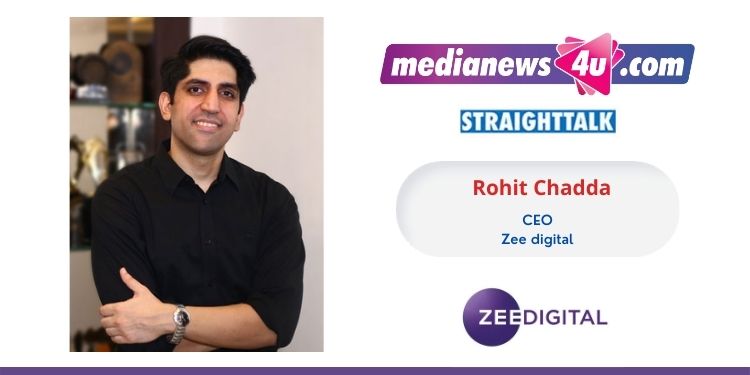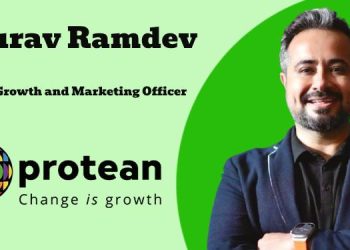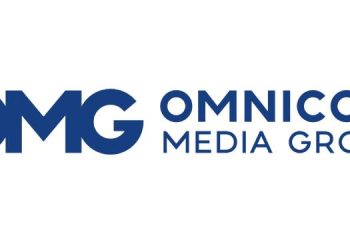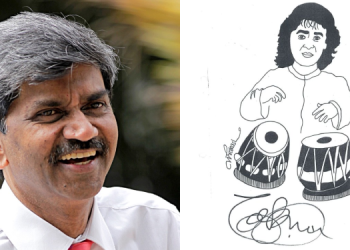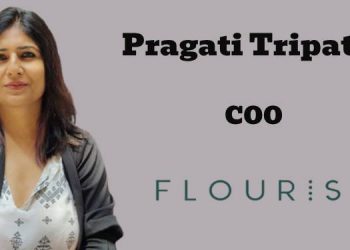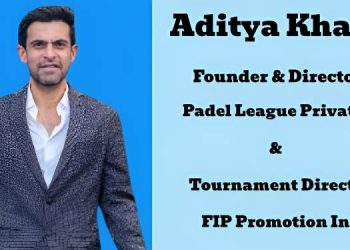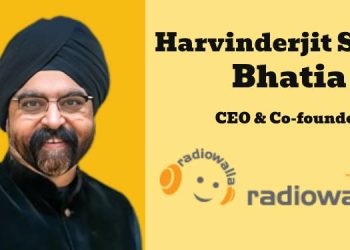India’s OTT platforms have seen a high growth during the pandemic period. OTT platforms saw a rise in their subscriptions. and to reach every content consumer in the country, the OTT platforms are formulating different strategies.
In this StraightTalk with Medianews4u, Rohit Chadda, CEO, Zee Digital talks on the strategies for the OTT platform, how advertisements are classified on OTT and more.
Excerpts:
In the era of digital marketing, many brands have opted to go digital. How does the digital advertisement in OTT platforms work and differ from TV and radio?
In TV, the reach of a show is based on the estimates that the rating agencies show and is used as the basis for advertising on the platform. Once a brand chooses to air its advertisement, you only get estimates as it is purely a branding platform where you are hoping that the user may remember the ad. However, whether the user remembers the ad or not, it is chance-based. Hence you cannot gauge the impact of the advertisement as it’s not measurable.
However, in OTT, the platform’s reach is very tangible and can be measured in numbers. So, there is high transparency in the level of reach. While on TV and Radio, you are charged for the spot. On OTT, you are charged for every view. You can measure the ROI in the case of the OTT platform. That’s not all; a call to action can be put easily on the platform when it comes to OTT. So not only can you measure the reach, but you can also measure the effectiveness of the communication.
Hence it becomes very easy to run multiple campaigns on OTT platforms and see which one is doing better. On TV, you cannot do this as a single ad can only run at a time. OTT platform gives you the option of further using user targeting based on demographics, area, age group, gender, interest and behavioural base, which cannot be done on TV. On the radio platform, you can only do location targeting but on the city level and not beyond that.
So, OTT platforms will always give you actual ROI, which can become the brand and performance campaign, while TV and radio will always remain a branding campaign only.
Like TV advertisements, where you have prime time. How is the advertisement classified in OTT, and how does Zee digital do it?
TV advertisements rates are highest on the prime-time slot as it is assumed that the maximum users are available then. But with OTT, you are paying per view and the logic of prime time isn’t applicable here. Here you can also cap the advertisement frequency you wish to show to a user, and it could be 2times, 3 times, etc. Post that OTT users cannot see the ad. This doesn’t happen in the case of TV. A user can see the same ad multiple times on TV.
So, for the OTT platform, it’s not important to see at what time the user is coming as you can easily do user targeting based on his age, location, behaviour and interest. You can target the user you want and limit the frequency of the ad consumption as well. What will determine the ad costing will be how deep you want the user targeting to be; if you’re going to run your ad in a broader audience, then the rates are lower, and as many filters you keep adding to the ad rates increasing going higher. But higher rates in OTT mean a sure shot ROI which is not the case for TV.
What are the avenues available for the Brands when they advertise with an OTT platform? How aware are the brands of the benefits from the advertising with the OTT platform?
Brands with advanced digital strategies are adopting OTT advertising as part of their performance mix because the future of TV is becoming more digital and data-driven. OTT video stats show that viewing has gone mainstream in recent years, especially for younger audiences, whose viewing habits have shifted from cable viewing to streaming services and OTT apps. Avenue like branded ads, video ads and branded content are now available for the brands to take. And it has been seen that brands are getting more and more aware, so they are now moving the budget from traditional media budget to digital marketing.
What kinds of campaigns do you do to reach your target customers? How often do you leverage influencer marketing? Shed some details about your views on influencer marketing and your take on it.
We use all performance marketing avenues to reach our potential customers and use our broadcast partners to reach the maximum users. We spend most of our money on performance marketing.
Influencer marketing is something that we are building on. It has become one of the most effective ways to reach the target audience. It works very well in today’s times; however, you need to be careful about selecting the influence, looking at their engagement rate, audience profile etc., in a closer manner. Don’t do just one influencer campaign; invest in the influence to see better results. We believe in the influencer marketing model, and we plan to build on it further and expand it. With our foray into UGC, we are now going to take up influencer marketing into a much bigger platform. With HiPi, we will allow people to become influencers and help existing influencers grow further and get newer ways to increase monetisation.
What are the favourite factors when it comes to customers on OTT and how do the OTTPs leverage this?
In most of the households, where the younger generation had no power over the remote. With OTT, we have changed it as now each individual has their own screen. Hence the control has now gone into each user’s hand. As parents used to call the shots, children would often get the remote after the prime-time slot. Households now watch different content pieces at the same time with different ads. This was not the case with TV, where all the family members watched the same thing simultaneously.
As one of India’s largest OTT platforms, how would you compare the Indian and Foreign markets? Where do the OTT’s have the biggest leverage?
The propensity to pay in foreign markets is higher, and the market there is more subscription-based, while the market in India is more advertisement based. A huge user base here in India is used to consuming free content. However, if we look internationally, users are used to paying for content. But slowly, things are changing in India, where people are now willing to pay for quality content.
So now you can see that subscribers are paying for digital publishing print websites and OTT platforms. Print papers have started now asking for subscription fees which earlier was not the case. Covid has given a huge boost to the entire OTT market.
Indian Entertainment industry has the largest reach throughout the countries. Share with us details regarding the influence the OTTs have? How do you ensure to have content that suits all?
We have a content strategy for all our focused countries that helps us deliver content that applies to each language/ region—helping us to cater to a broader audience base. For example, during the US presidential elections, we did a first of its kind digital-first global launch of our international news channel WION, making it available on 4 billion connected devices globally. The brand received tremendous response in the global markets and has seen 90% growth in users over the past 6 months. The growth and increment have been inspiring and is pushing the team every day to come up with incredible ideas to help users to receive easy access to our content.
Zee digital, under which there are other products, BGR.in, India.com, How do you attract the customers and how different are the campaigns done compared to the OTT?
We build our products in such a way that they can be put forth as is. Our products can market themselves. We spend a lot of time developing strategies that help our products to work better. The strategy for all the mediums differs from one another. During the past couple of years, our entire effort has focused on catering to the 450+ million news & entertainment internet audience in India, and the results are here for all to see. With a tech and data-first approach to content, we’ve worked on the digital transformation of all functions to become a digital-first organisation.
Keeping the readers’ needs first is the only way to lure readers to any platform. On digital, one needs to find a way to listen to what the user has to say, whether directly or indirectly, through data. When you create your content strategy per the users’ preferences and build your product strategy to enable easy discovery and consumption of that content, the growth will follow.
What are your expansion plans, and How are you planning to launch it during the pandemic?
Mobile contributes to 95% of our users; hence our entire product roadmap is focused on mobile-first to ensure the best experience on mobile devices. We launched native mobile apps for 4 of our major brands – our flagship digital brand India.com, our fast-growing national Hindi news brand Zee Hindustan, our #1 Bengali news brand Zee 24 Ghanta and #1 Hindi business news brand Zee Business making the content accessible to the end-users on the go. At the same time, performance, UI/UX, and size improvements in the updates of existing WION and Zee News mobile apps helped them become the highest-rated news apps in the World and India, respectively, with user ratings of 4.9 and 4.7, respectively on the Google Play store.
The future of digital content lies in 3Vs – Video, Vernacular (Languages) and Voice, and that’s what our focus has been. Bringing videos to the forefront of the product and setting up a strong video infrastructure helped us grow from 200 million video views in FY19 to over 2.5 billion video views in FY21.
The lockdown resulted in an increase in content consumption across brands. It was the same for us. However, the difference between ZEE and other competitors is that while we have sustained our user growth even after the lockdown was over, most competitors went back to pre-lockdown numbers. In fact, during the lockdown, ZEE Digital became the second-largest digital media group in the country.

